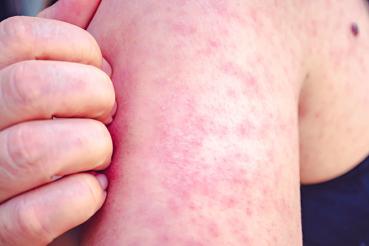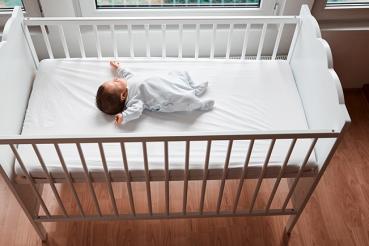October is SIDS Awareness Month, and here at Rush we have been active in many ways to prevent SIDS and champion safe sleep for babies. From modeling safe sleep in our nursery, NICU and general pediatrics units, to developing safe sleep education for providers, to participating in national work to prevent SIDS — Rush University Children’s Hospital is proud to hold a Gold Safe Sleep Champion Certification Award from Cribs for Kids.
One of the questions that we hear often — in one way or another — is whether SIDS is really that big of a problem. Sadly, it is much more common than we may think, since these deaths never make the news. SIDS is the leading cause of death for babies between the ages of 1 and 12 months old. Across the nation, nearly 3,400 babies die each year from SIDS. Here in Cook County, one to two babies die each week from SIDS. The tragedy experienced by families when life was so new, and held so much promise, is unimaginable.
ABC's of safe sleep
So we have set our sights on prevention. SIDS risk can be reduced, and there has been success in the past. The American Academy of Pediatrics “Back to Sleep” campaign in the 1990s — which urged families to place their babies on their backs to sleep — successfully brought SIDS rates down to its current level. This level, however, has stalled for the past 20 years. Placing babies on their backs to sleep is a must, but so are two other practices — placing babies in their own crib, bassinet or playpen (like a pack-n-play) to sleep, and making sure that sleep space has nothing else in it — no pillows, blankets, bumpers, toys, or soft bedding. These are called the “ABC’s” of safe sleep — placing babies Alone, on their Back, in their own Crib – for every sleep.
Many families have told us “My baby can’t sleep that way!” Many cultures value sleeping with their babies. Many grandparents learned to put babies on their stomach to sleep. And many tired parents find in the middle of the night that it’s simply easier for everyone if their baby comes to bed with them. These are all common stories, and many babies have blissfully celebrated their first birthdays having made it through such nights.
So why do these babies do OK, while other babies don’t? That is one of the questions that plagues us in preventing SIDS. And it is what we are trying to learn by leading the CDC’s Sudden Unexpected Infant Death Case Registry for Cook County. In partnership with the Cook County Medical Examiner’s office, we carefully review each of these tragedies to better understand the circumstances leading up to the death.
What you can do
Sometimes it is suffocation — a baby found face down on a comforter, pillow, or adult mattress. Sometimes it is entrapment — a baby found wedged between the bed and the wall, or under a parent or sibling, unable to free themselves. And sometimes it is not clear at all — a baby found in the same position that parents placed them to sleep in their adult bed or couch. But one thing is clear — SIDS hardly ever happens when a baby is in their crib, on their back, without anything else in the crib. And this is why prevention has focused so heavily on the ABC’s of Safe Sleep.
This month we hope to raise awareness about SIDS — every week we will share messages from the NIH Safe to Sleep Campaign that we hope you’ll share with those you care for — in your clinic, your community, your neighborhood, your home. The more we share these messages, the more first birthdays we can celebrate – and cherish.
If you’re looking for ways to share about SIDS and Safe Sleep, check out our Sleep Safety for Infants video – and share!




